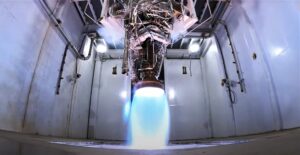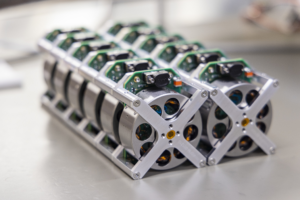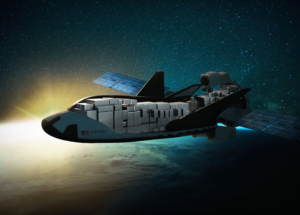
The Future of Sierra Space’s Inflatable LIFE Habitat
Each day we are seeing more developments related to not only accessing space but creating destinations as well. Projects like Orbital Reef, Axiom Station, and more, are trying to change the possibilities of low Earth orbit. Recently, we have seen a lot more progress on key components of this ambitious future including Sierra Space’s LIFE Habitat.
Sierra Space’s LIFE (Large Integrated Flexible Environment) habitat launches on a conventional rocket and inflates on-orbit to a large structure that is three stories tall, and 27 feet in diameter. Orbital Reef is a commercially developed, owned, and operated space station to be built in low Earth orbit. In the future, some of the main space available for work and living will be inside these massive inflatable habitats.
In the last few months, Sierra Space has completed a few vital tests to ensure that this system is safe for humans using a scale model. This year Full-scale LIFE UBP tests are set to begin, in order to complete NASA’s certification of the habitat’s primary structure for human use in space. Here I will go more in-depth into this unique habitat innovation, its application to Orbital Reef, what to expect in the future, and more.
Inflatable LIFE Habitat
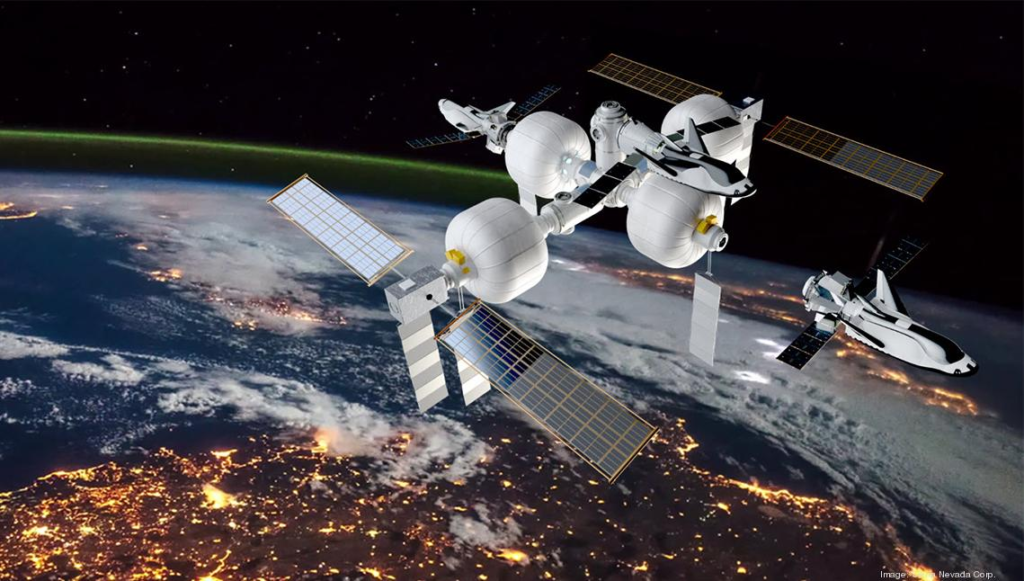
Work on the LIFE Habitat has been going on for years now. Back in 2019, a full scale LIFE habitat prototype was delivered to NASA’s Johnson Space Center, where it successfully completed a very positive crew evaluation. Once inflated on orbit, LIFE can comfortably sleep four astronauts, with additional room for science experiments, exercise equipment, a medical center, and SNC’s Astro Garden® system, which the company is developing as an option to grow fresh produce for astronauts on long-duration space missions.
As far as testing, the last few months have been very busy. In July 2022, The LIFE Habitat successfully completed its first Ultimate Burst Pressure test. The test was performed at NASA Johnson and was the first of two sub-scale burst tests scheduled for 2022. This initial test was in support of Sierra Space’s softgoods certification. Here they used a one-third scale of Sierra Space’s LIFE inflatable habitat – which burst at 192 psi – exceeding the safety requirement of 182.4 psi. As a result, this stress test was among the highest publicly released data points for a softgoods UBP test at any scale. Sub-scale tests are used to support the overall full system development and to determine the ability of a vehicle to withstand the maximum internal pressure required to cause failure of the vehicle’s pressure shell, commonly known as the restraint layer.
Next on December 13th the company tweeted saying, “Sierra Space has successfully completed its second sub-scale Ultimate Burst Pressure (UBP) test and is the only active commercial space company to successfully meet multiple UBP trials.” Following the success of its first UBP test in July of this year, this second test further established Sierra Space as the leader in commercial space station development and the only active commercial space company to meet multiple successful UBP trials.
Sierra Space’s LIFE forms part of the company’s in-space destinations technology portfolio. LIFE is constructed of high-strength “softgoods” materials, which are sewn and woven fabrics – primarily Vectran – that become rigid structures when pressurized. The two sub-scale UBP tests in July and November achieved maximum burst pressure rates of 192 and 204 psi, respectively. Exceeding the safety requirement of 182.4 psi demonstrates that Sierra Space can meet the 4x safety factor required for softgoods inflatables within its current architecture at one-third scale. The company is still targeting sometime this year for a full scale UPB test. Here we will watch a similar process but with a massive 27 foot diameter LIFE module. Assuming this future testing goes well, Sierra Space and the LIFE module will be one step closer to using this technology on future space stations and more.
Future Applications
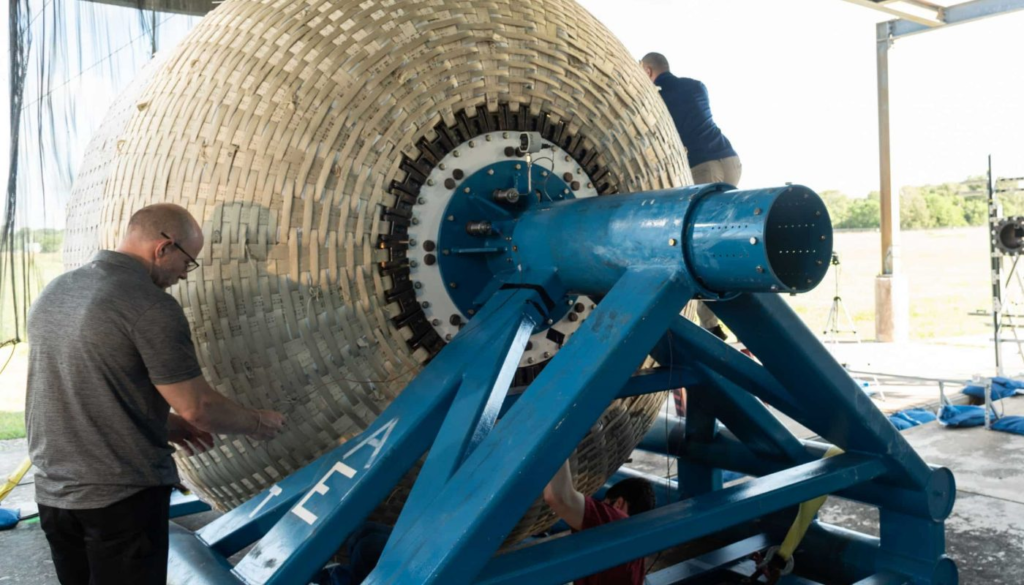
Now that we know more about some of the progress on this system, we can take a closer look at its future applications and how exactly it survives the space environment. One of the first and most set in stone uses of this system is Orbital Reef. Designed to open multiple new markets in space, Orbital Reef is hoping to provide anyone with the opportunity to establish their own address on orbit. This unique destination will offer research, industrial, international, and commercial customers the cost competitive end-to-end services they need including space transportation and logistics, space habitation, equipment accommodation, and operations including onboard crew. The station is aiming to start operating in the second half of this decade. The two main companies working on this project are Sierra Space and Blue Origin. One of Sierra Space’s main contributions to the project is the LIFE Habitat which is expected to make up the majority of space within the station. Different animations and visuals show off the use of multiple LIFE Habitats used in conjunctions with normal station segments. To get a better idea of how big these inflatable habitats really are, they feature 300 cubic meters of pressurized volume (about 1/3 the pressurized volume on the international space station).
In addition to Orbital Reef, NASA has also taken notice and is interested in the future opportunities with this system. On September 13th, NASA tweeted mentioning, “When #Artemis astronauts start living on the moon, inflatable habitats could be their home. Sierra Space recently conducted a successful burst pressure test on one of its prototype habitats at NASA Johnson under the NEXTSTEP-2 Habitat Systems contract managed by Marshall.” This is a great example of what the future on the Moon could look like with inflatable habitats being a popular choice. When it comes to launching infrastructure, often the main problem is size as rocket fairings are only so big. This system allows a reasonable launch size before being inflated at its destination. Specifically, the LIFE habitat is specifically designed to launch on commercial launch vehicles with a 5m fairing, providing multiple, low-cost launch options. It can also launch on the Space Launch System (SLS) since it expands only after it is on-orbit, making it easier and less expensive to transport.
Focusing back on the system itself, the LIFE habitat is currently being designed to support four crew members living and working on long-duration missions, such as those to Mars. It comfortably houses six for missions in LEO, but can accommodate 12 crew for shorter periods of time such as those during which crew members transition. Because of its modular nature, additional habitats can be joined to each other to accommodate more crew, or for a variety of other purposes. As partially mentioned prior,t the LIFE habitat prototype is constructed of several soft goods layers including, but not limited, to, the inner layer, called the bladder, made of urethane and is designed to keep the air inside the habitat without leaking. The pressure shell layer, known as the restraint layer, is a Vectran fabric weave that is strong enough to withstand the internal pressure needed for the crew to live & work comfortably in space. So strong the company points out that it is stronger than steel. And finally, the outer layers consisting of Micro Meteoroid Orbital Debris (MMOD) and Multi-Layer Insulation (MLI) which provide orbital debris and thermal protection. Some of these layers shield the habitat from space debris such as micrometeoroids. Not to mention, the layers of fabric, plus the internal outfitting, create ample safeguards against radiation.
“The LIFE habitat is one of the most innovative products designed and developed by Sierra Space and is essential for enabling humans to safely and comfortably begin to develop new civilizations in space,” said SVP and GM, Space Destinations, Neeraj Gupta. “The product has many applications in low-Earth orbit and for deep-space and surface habitation on the moon and Mars. LIFE will revolutionize humans’ ability to commercialize and explore space and we could not be prouder to achieve this important milestone. Sierra Space is leading the development of advanced inflatable habitat systems and continues to be the leader in softgoods inflatable systems and architectures.” “The LIFE habitat module is essential technology for enabling humans to safely and comfortably begin to develop new civilizations in space,” said Sierra Space CEO Tom Vice. “This project will service many different opportunities for the new space economy, and the results of this most recent test and milestone are testament to the progress our team is making to enable the next chapter in space commercialization.” With the recent successful testing, this project is making good progress toward a full scale test and eventually sending one into space. From here, it’s possible we see it on the Moon, low Earth orbit, a journey to Mars, and even more.
Conclusion
Sierra Space has been making a lot of recent progress on the LIFE Habitat which is expected to change how we launch and live in space. Since July of last year, the company has completed two ultimate burst pressure tests that both provided impressive results. Agencies like NASA have already shown an interest in this technology and what it has to offer, in addition to Orbital Reef. We will have to wait and see how it progresses and the impact it has on the space industry.

